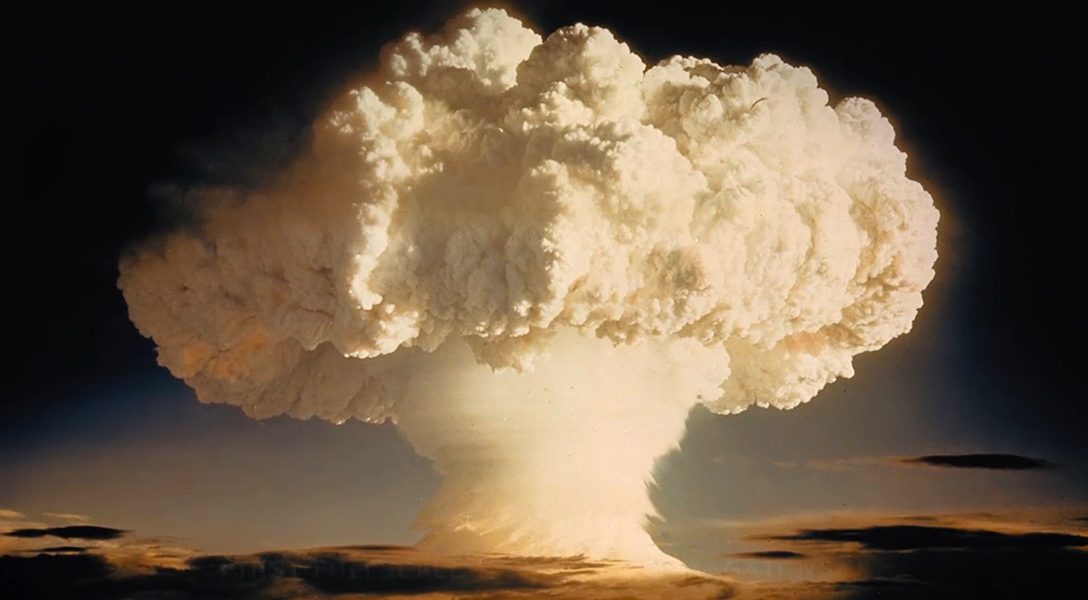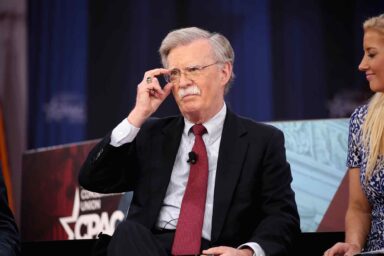The United States and Russia both recognize that chemical and biological weapons are too dangerous for any government to possess — including themselves. Why are nuclear weapons an exception?
Iran’s decision to stop complying with parts of a landmark nuclear deal, and North Korea’s new round of missile tests have the world talking about the possibility of nuclear war again.
In light of the devastation these weapons cause, it defies logic that such a war is ever a possibility. Yet the “Doomsday Clock” of the Bulletin of the Atomic Scientists stands at two minutes to midnight, indicating that the risk of a nuclear confrontation right now is extremely high. How did we get here and why has the world collectively not found a solution to this threat?
Most governments recognize that certain kinds of weapons are so dangerous that simply possessing them creates an imminent danger to the safety and security of the planet.
Almost every country, including the United States, has signed onto the Biological Weapons Convention, banning the development, production, and stockpiling of such weapons. The same is true with the Chemical Weapons Convention.
Why then does the United States, as well as other nuclear-armed states like Russia and China, not also take a similar posture towards nuclear weapons?
America’s policy seems to be “nuclear weapons don’t kill people, people kill people.”
Certainly those in power do not fail to recognize these weapons’ awesome power and potential for destruction. They’ve only grown more deadly over the decades. When the US dropped the first atom bombs on Hiroshima and Nagasaki in 1945, killing 220,000 people, they delivered approximately 15 and 21 kilotons of energy respectively. Today’s modern weapons are an order of magnitude more powerful.
Related: Classic Who: Hiroshima Series, Part 1
The largest energy-yielding bomb ever exploded was the Russian “Tsar Bomba” with a 50 megaton detonation in 1961 — 2,000 times more powerful than the first atom bombs, with a fireball eight miles in diameter.
To get a sense of what one of these weapons can do, you can check out this interactive app that uses Google Maps to demonstrate the radius of destruction, estimated fatalities, and radioactive fallout for various types of nuclear weapons.
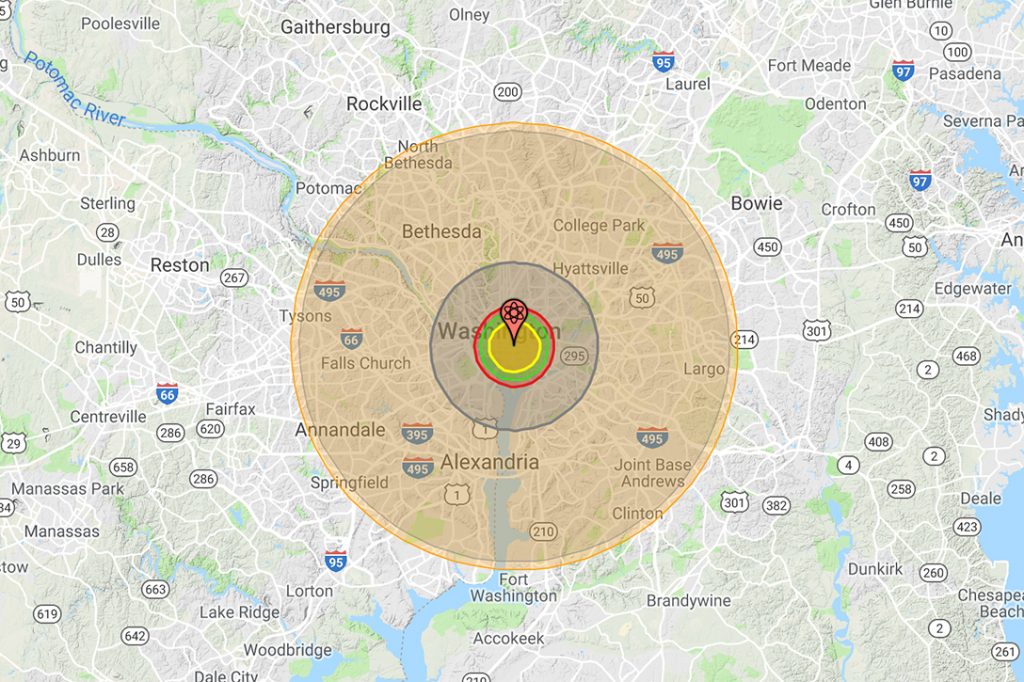
But perhaps even more dangerous than the increased yields are the sophisticated new methods of delivery. Consider the MIRV — short for “multiple independently-targetable reentry vehicle.” MIRVs are essentially smaller warheads packed inside the main warhead of a ballistic missile.
The idea is that when the missile descends on the target, the MIRV warhead will open and release all the smaller, harder to defend against warheads toward different targets — either spread wide to hit multiple cities and military bases, or concentrated on a single area for maximum damage.
The US Navy has 14 submarine-launched ballistic missiles (SLBMs) with 4–5 MIRVs each. Russia unveiled its new “Satan 2” MIRV missiles in 2016. The latter weapon was demonstrated in a visual animation during a recent talk by Vladimir Putin. The MIRVs were shown falling on President Donald Trump’s favorite getaway destination — Mar-a-Lago.
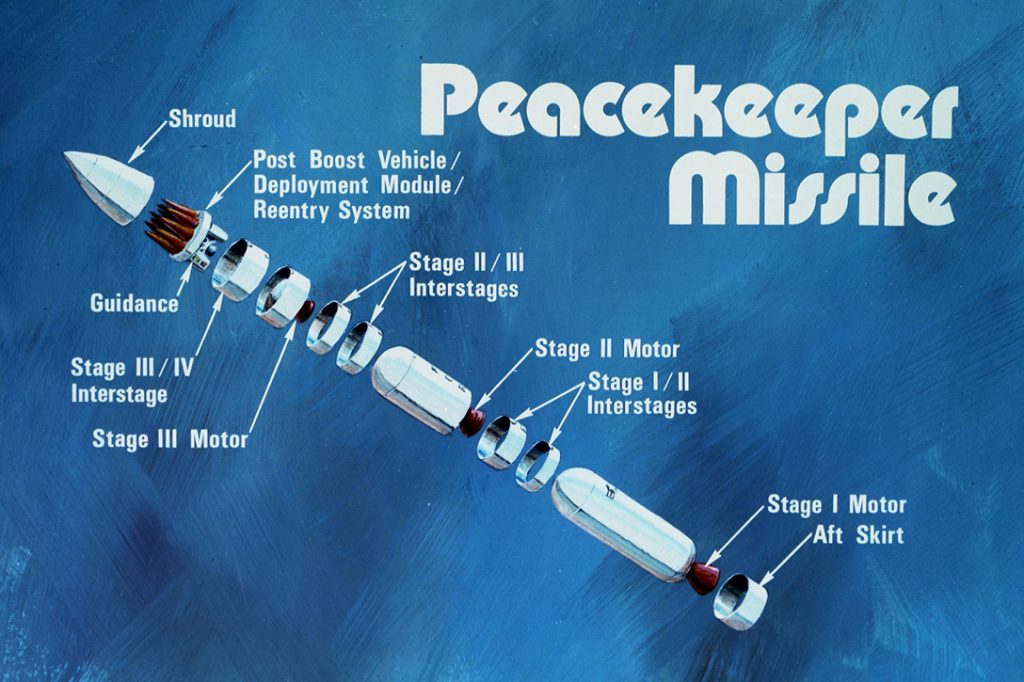
Or consider the ballistic missile submarines that crawl silently along the ocean floor — undetected by either friend and foe. The US Navy currently has 14 of these subs deployed.
Or the B-52 nuclear bombers that were for decades in a 24/7 flight pattern headed toward targets in Russia, only to turn away before reaching their fail-safe distance. More than one apocalyptic novel or movie has been written around something going haywire with these deterrence systems.
If a nuclear exchange between rival powers were to occur, not only would millions of lives likely be lost, but the very existence of life on this planet could be in jeopardy because of the effects of nuclear winter.
Add to that nightmare scenario the consideration that humanity has already come to the brink of annihilation more than once — as shown by several accidental incidents.
This is not to say that no progress has been made. In 1963 the US and Russia — the two countries with by far the most nuclear weapons — signed the Partial Nuclear Test Ban Treaty, and both countries have abided by that agreement to never again test detonate a nuclear weapon above ground. (Russia has also signed and ratified the Comprehensive Nuclear Test Ban Treaty, banning underground detonations as well. The United States has signed, but not ratified the treaty.)
The US and Russia are also signatories to the Treaty on Non-Proliferation of Nuclear Weapons (NPT). The treaty, ratified in 1970, bans the sale or transfer of nuclear weapons and technology, with the eventual goal of disarmament, preserving the right for peaceful use of nuclear power.
Both countries have signed other incremental treaties over the decades that have helped significantly reduce the number of warheads and deliverability systems, including the recent New Start treaty, signed in 2010.
In early 1960s, the United States nuclear arsenal was at its peak, with over 30,000 weapons, while the Soviet Union had over 40,000 in 1986. Today, both the US and Russia have approximately 7,000.
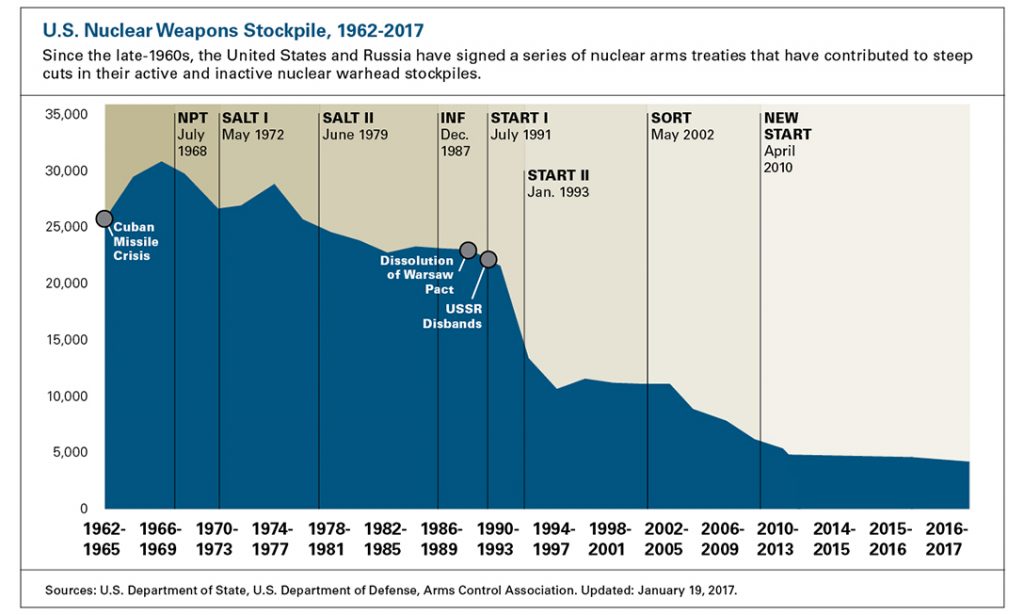
While this downtrend is certainly praiseworthy, both countries still have more than enough weapons to blow up the entire world. Recent posturings by both nations, and calls for “modernization” of nuclear arsenals are causing great concern among peace activists.
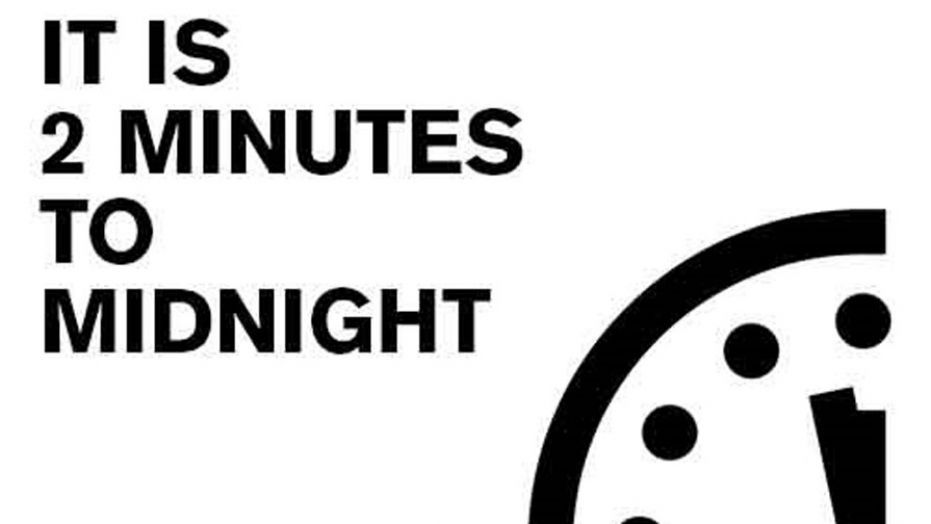
While the NPT signers have agreed to work towards disarmament, a majority of countries have not been satisfied with the current state of affairs and slow progress. On July 7, 2017, 122 countries voted to approve the text of the Treaty on the Prohibition of Nuclear Weapons — the first treaty completely banning the use, possession, and development of nuclear weapons. As of today, 57 countries have signed on to the treaty.
Noticeably absent signatories are all currently nuclear-armed countries.
The below video further explains the Treaty on the Prohibition of Nuclear Weapons, and is followed by a video of former UN Ambassador Nikki Haley explaining why the US does not agree with the treaty.
An earlier version of this article incorrectly stated the following: “under the Obama administration, the US removed the last MIRV missile from its arsenal in 2014.”
Related front page panorama photo credit: Adapted by WhoWhatWhy from peace sign (Schuminweb / Wikimedia), nuclear symbol (Unknown / Wikimedia), and mega-cities (Cocoliras / Wikimedia).
